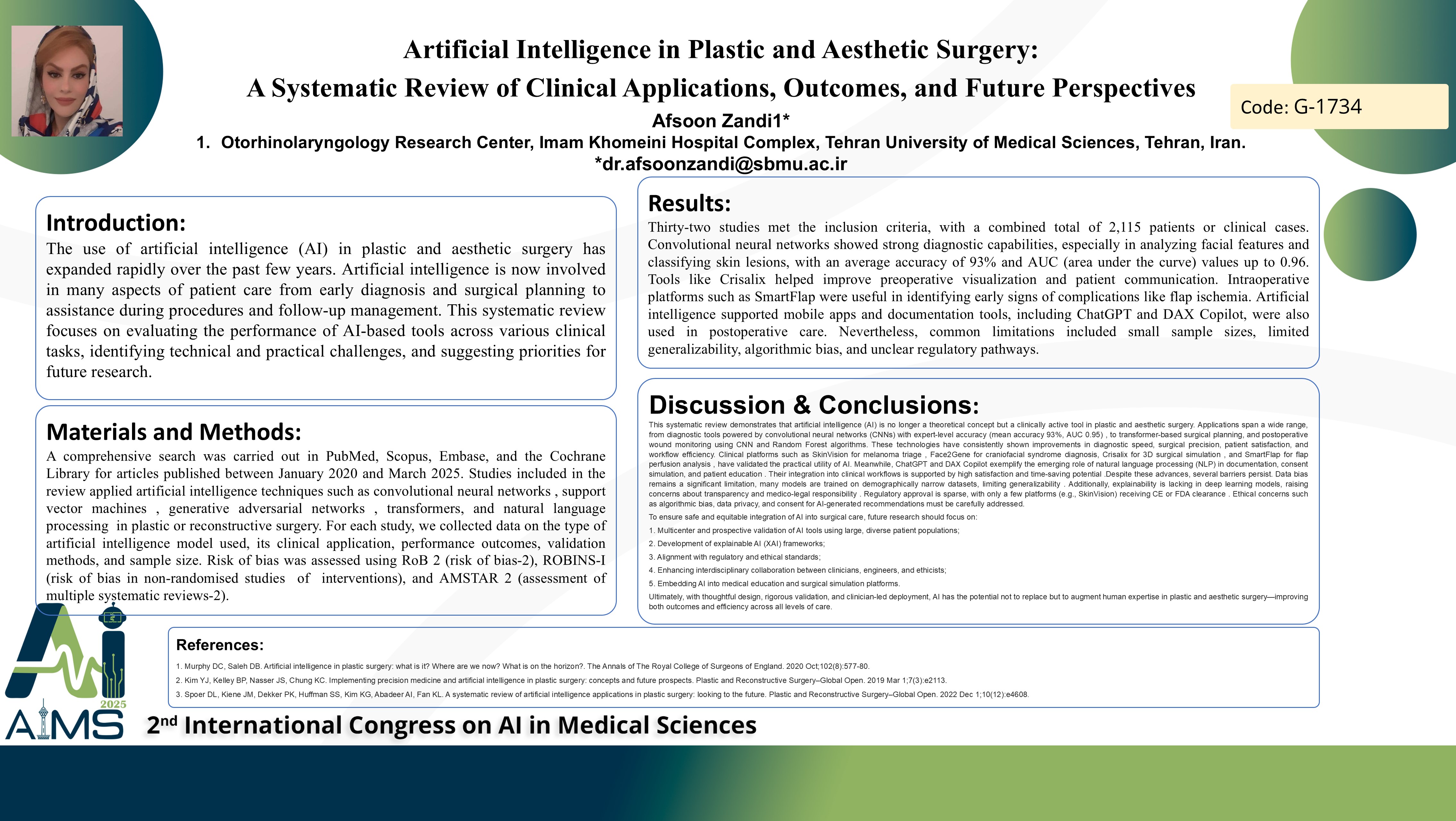Artificial Intelligence in Plastic and Aesthetic Surgery: A Systematic Review of Clinical Applications, Outcomes, and Future Perspectives
Code: G-1734
Authors: Afsoon Zandi * ℗
Schedule: Not Scheduled!
Tag: Intelligent Virtual Assistant
Download: Download Poster
Abstract:
Abstract
Background and aims: The use of artificial intelligence (AI) in plastic and aesthetic surgery has expanded rapidly over the past few years. Artificial intelligence is now involved in many aspects of patient care from early diagnosis and surgical planning to assistance during procedures and follow-up management. This systematic review focuses on evaluating the performance of AI-based tools across various clinical tasks, identifying technical and practical challenges, and suggesting priorities for future research. Method: A comprehensive search was carried out in PubMed, Scopus, Embase, and the Cochrane Library for articles published between January 2020 and March 2025. Studies included in the review applied artificial intelligence techniques such as convolutional neural networks , support vector machines , generative adversarial networks , transformers, and natural language processing in plastic or reconstructive surgery. For each study, we collected data on the type of artificial intelligence model used, its clinical application, performance outcomes, validation methods, and sample size. Risk of bias was assessed using RoB 2 (risk of bias-2), ROBINS-I (risk of bias in non-randomised studies of interventions), and AMSTAR 2 (assessment of multiple systematic reviews-2). Results: Thirty-two studies met the inclusion criteria, with a combined total of 2,115 patients or clinical cases. Convolutional neural networks showed strong diagnostic capabilities, especially in analyzing facial features and classifying skin lesions, with an average accuracy of 93% and AUC (area under the curve) values up to 0.96. Tools like Crisalix helped improve preoperative visualization and patient communication. Intraoperative platforms such as SmartFlap were useful in identifying early signs of complications like flap ischemia. Artificial intelligence supported mobile apps and documentation tools, including ChatGPT and DAX Copilot, were also used in postoperative care. Nevertheless, common limitations included small sample sizes, limited generalizability, algorithmic bias, and unclear regulatory pathways. Conclusion: Artificial intelligence technologies are making a meaningful impact on plastic and aesthetic surgery by improving diagnostic accuracy, streamlining workflows, and supporting better clinical decisions. However, their successful integration into everyday practice will require thorough validation, more transparent algorithms, and clear ethical and regulatory standards to ensure safety and equity in patient care.
Keywords
Artificial Intelligence, Medicine, Plastic Surgery
